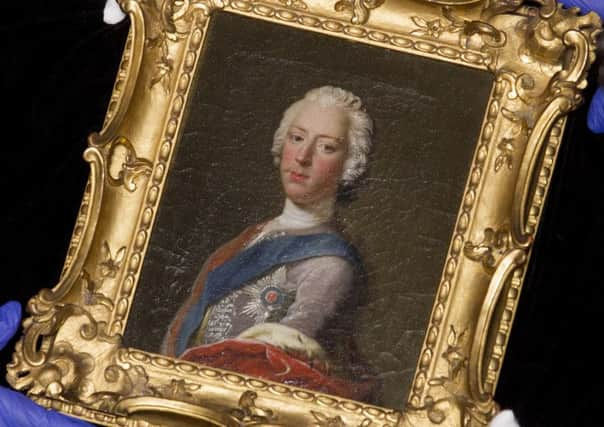Jacobites book review: The rationale behind the '˜weak & rash' rebellion of '45


Jacobites by Jacqueline Riding | Bloomsbury, £25
Given the title and extent of this book (some 600 closely printed pages) one might assume it was a comprehensive overview of pro-Stuart sympathies from the Battle of Killiecrankie to Queen Victoria’s declaration that she was “a Jacobite at heart”.
Instead it is a forensic and accomplished account of roughly 14 months, from the time that Charles Edward Stuart departed from Sainte-Nazaire with the Dutillet and the Elisabeth (only one of which would reach Scotland) till the point where he escapes from Borrodale on the ironically named L’Heureux. It is an immensely rigorous and meticulous book, but the narrative momentum never flags; in part through Jacqueline Riding’s judicious use of contemporary accounts. By keeping the reader “in the moment” it avoids an overly deterministic view of the campaign.
Advertisement
Hide AdDoes it, however, tell us anything new about the ’45? To an extent her method does throw new light on aspects of the whole affair. Certain words come up frequently in terms of the British response to the news that Charles had landed: Alexander Macdonald complains “some of our neighbours… have been mad enough to join the Young Adventurer”. Clanranald is “deluded”; the Lord Justice is surprised that “Lochiell should play the madman”. It is, according to Lord Tweeddale, “a rash and desperate attempt”. But the same turns of phrase are on the pens of the Jacobites. Lord Elcho at first thinks it “something very weak & rash”, Hugh MacDonald says to Kinlochmoidart “surely you are joking”, and even the would-be James VIII and III, the man whom Charles is attempting to put on the throne, cautions against “precipitate and desperate measures… a rash & ill concerted project”. Disbelief was a strategic advantage. So too was a curious consequence of the after-effects of previous rebellions. Those loyal to the Crown obeyed the disarming act. Those opposed to the Hanoverians ignored it. Despite the paucity of Charles’ arms, the government was ill-prepared.
There is a telling moment where Riding records the books that Charles brought with him: The Art Of War by the Marquis de Guise, Machiavelli in eight volumes and Voltaire’s Letters Concerning The English Nation. How sincere was Charles’ support for the re-establishment of a Scottish Parliament? From a Machiavellian point of view, this was exactly what somebody like Sir George Murray wanted to hear. In Rome, Charles had appeared dressed in “a Scotch Highlander’s habit… adorned with jewels to the value of 100,000 Roman crowns”. Throughout the campaign, it is conspicuous when Charles dresses in Scottish clothes and when he reverts to lace and velvet. But it is equally clear that Scotland alone was never his aim. Indeed, one can imagine his Scottish supporters wincing when he declared he would treat Holyroodhouse the same way George II treated his Hanoverian Herrenhausen Palace: as a holiday home.
Charles certainly didn’t understand Realpolitik when it came to religion. Although his father was personally pious and wished to see a crucifix mounted on London Bridge, Charles said the princes of Europe had “little or no religion at all”. Why then persist in a Catholicism which alienated potential supporters?
The key might be in the inclusion of Voltaire. Charles simply didn’t understand Scottish or English politics or religion; and what he did know was filtered through French eyes. Nor did he realise how much the 1688 settlement had changed things. When, at Derby, he threatens to dismiss his council and make decisions alone, he reveals a streak of absolutism. Figures like Elcho and Murray may have defended his hereditary rights, but would not brook their counsel being dismissively overlooked. Indeed, the very strategy they proposed – a retreat north to over-winter – was the option most feared by the British forces.
Why did the English not rise in support? Riding’s version is very like that of Dr Johnson, who opined that the English “would not give twenty shillings” to restore the Stuarts, but “if England were fairly polled, the present King would be sent away to-night and his adherents hanged tomorrow”. In addition, because people loyal to George II tended to flee, the Jacobites misinterpreted the levels of popular support when they entered Manchester or Lichfield.
The aftermath of Culloden shows again how Charles misread the situation. Encouraged by his Irish advisers, Charles thought to regroup on the Continent and try again. For the Scottish nobility, only a continued campaign might save their families, properties and lives. The descriptions of their subsequent executions make for grim reading. Charles, on the other hand, would have a long time to think over his mistakes.
Advertisement
Hide AdRiding has done sterling service in providing one of the most nuanced and sophisticated histories of the ’45. Time and again, it offers fresh perspectives and interesting angles. Perhaps the most intriguing is Charles, in the days before Culloden, having his own bank notes designed to be redeemed on his victory. Money, as much as manpower, dictated the outcome.
